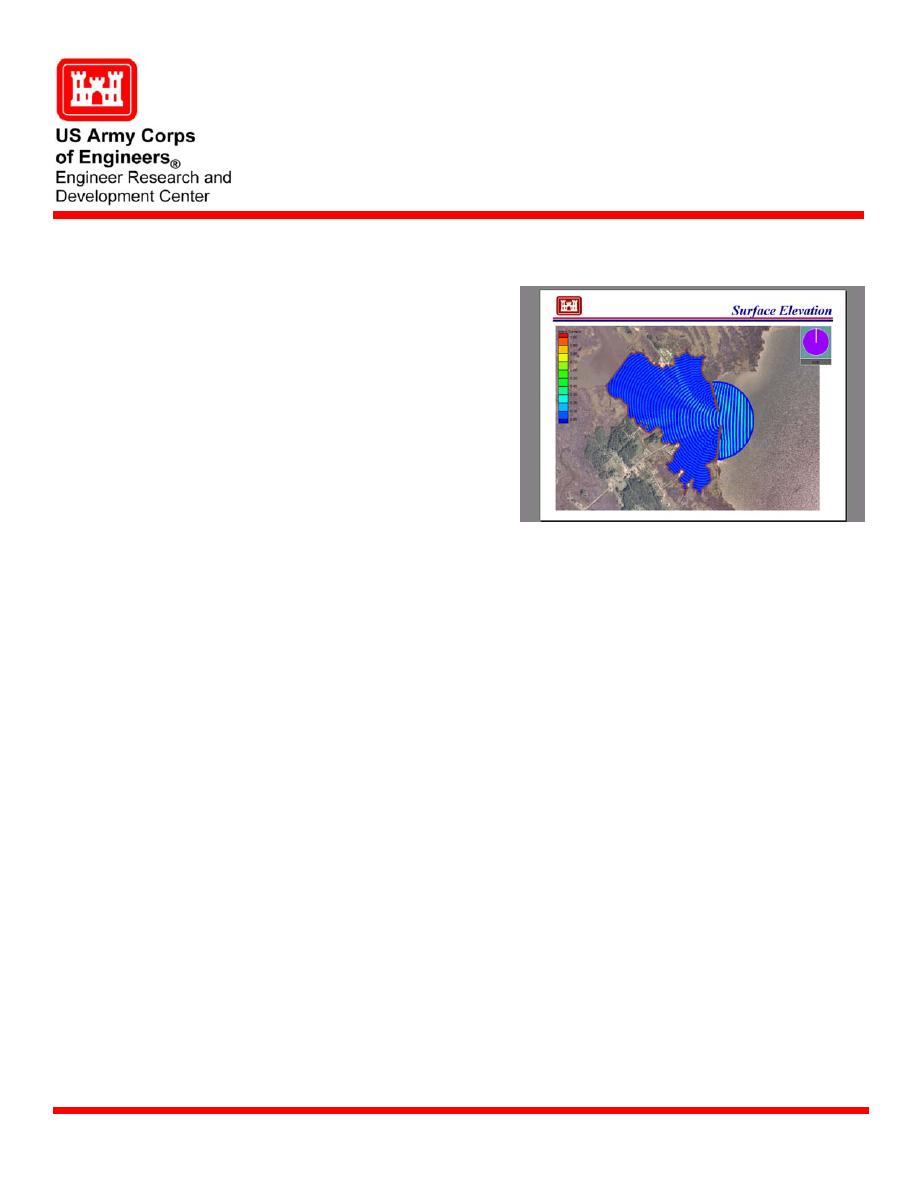
Wave Modeling in Harbors, Inlets,
and Near Structures Using
CGWAVE
Description
CGWAVE is a general-purpose wave prediction model for simulating the propagation and
transformation of ocean waves in coastal regions and harbors, and appropriate for
modeling the most significant physical processes in channels, inlets and harbors, open
coastal regions, around islands and
structures. CGWAVE is based on
frequency domain solution of the
mild-slope equation (MSE), which
represents the depth-integrated
equations for the conservation of
mass and momentum for waves
propagating in water of variable
depth. The model is operational in
Surface-water Modeling System
(SMS) for generating model's finite
element mesh and analysis and
visualization of model results.
Animation of surface waves generated using CGWAVE
Benefits
While CGWAVE can simulate the
combined effects of wave refraction
and diffraction, this model is unique for its ability to represent wave diffraction, wave
reflection and standing waves (harbor oscillations) in nearshore applications. The model
may be used for simulation of both short and long waves, monochromatic or spectral
waves, in large spatial areas. A highly parallelized version of the model may be used on
supercomputers for simulating spectral waves or modeling waves over very large domains
(greater than 1,000,000 nodes). Model may be forced with the incident waves specified at
its open ocean boundary. The incident waves may be periodic or non-periodic, or
unidirectional or multidirectional. The numerical model solves for the integral wave
parameters such as the wave height, wave direction and phase, and wave kinematics
(optional). Time-dependent sea-surface elevation can be created in the SMS post-
processing stage if required in military or civil applications. Animation of the evolution of
surface waves is done in SMS using model output files. Two- and three-dimensional
animation of model results showing the variation of waves in space and time may be
produced in SMS. These allow the modeler to quickly check model I/O as well as observe
complex behavior of waves in an intuitive manner.
Documentation
How to Use CGWAVE with SMS: An Example for Tedious Creek Small Craft Harbor,
and Support
CHETN I-68.
Application
Some recent applications of the model include nearshore wave climate studies in Kahului
Harbor, and Kawaihae Harbor in Hawaii; Pago Pago Harbor, American Samoa; Brookings
Harbor, Oregon; Morro Bay, California; Grays Harbor and Diffraction Mound in Half
Moon Bay, Washington; Grand Haven and Pentwater Harbors in Michigan; and Tedious
Creek, Maryland.
Point of Contact
Dr. Zeki Demirbilek, CEERD-HN-H, 3909 Halls Ferry Road, Vicksburg, MS 39180-
6199; email . Additional information can be
found at http://chl.erdc.usace.army.mil.
U.S. Army Engineer Research and Development Center
January 2005
Coastal and Hydraulics Laboratory (Product)
www.erdc.usace.army.mil



 Previous Page
Previous Page
